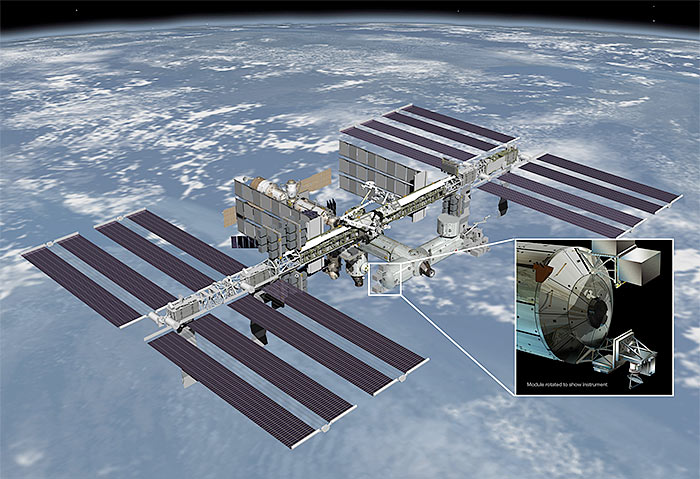
In a clever reuse of existing hardware, NASA will install a microwave scatterometer aboard the International Space Station. The new instrument, which NASA has dubbed RapidScat, uses test hardware originally built for the QuikSAT satellite program. Scatterometers are instruments for remotely measuring the ocean surface wind speed and direction. The ISS-RapidSCAT instrument will help improve weather forecasts, including hurricane monitoring, and understandings of how ocean-atmosphere interactions affect climate.
RapidScat is a replacement for the QuikSCAT satellite, which failed in 2009. QuikSCAT was originally launched in 1999 and expected to operate for only two years. QuikSCAT itself was designed s a quick recovery mission to replace the the NASA Scatterometer (NSCAT) satellite which failed in 1997 after less than a year in orbit.
The loss of QuickSCAT was felt by weather forecasters at the National Oceanographic and Atmospheric Administration, but NOAA did not feel it was a high enoguh priority to justify the expense of a replacement satellite. Instead, NOAA and NASA are concentrating on getting the next generation of weather satellites, called GOES-R, off the ground.
RapidScat will will be launched to the space station aboard a SpaceX Dragon capsule in 2014. It will be installed on the end of the station’s Columbus laboratory as an autonomous payload requiring no interaction by station crew members. It is expected to operate aboard the station for two years. (Of course, QuikSCAT was only intended to operate for two years, so the hardware might last much longer.”
Howard Eisen, ISS-RapidScat project manager at JPL said the instrument “represents a low-cost approach to acquiring valuable wind vector data for improving global monitoring of hurricanes and other high-intensity storms. By leveraging the capabilities of the International Space Station and recycling leftover hardware, we will acquire good science data at a fraction of the investment needed to launch a new satellite.”
It has frequently been proposed that NASA and other customers might save time and money by hosting instruments aboard a space station or human-tended space platform, rather than building a dedicated satellite. (In the future, such as platform might be serviced by advanced robots as well.) The high overhead and limitations of ISS have prevented the widespread adoption of this practice, however. It might become more common in the future with the advent of commercial platforms and stations, such as Bigelow’s Alpha Station, pricing for which was recently announced.

Leave a Reply